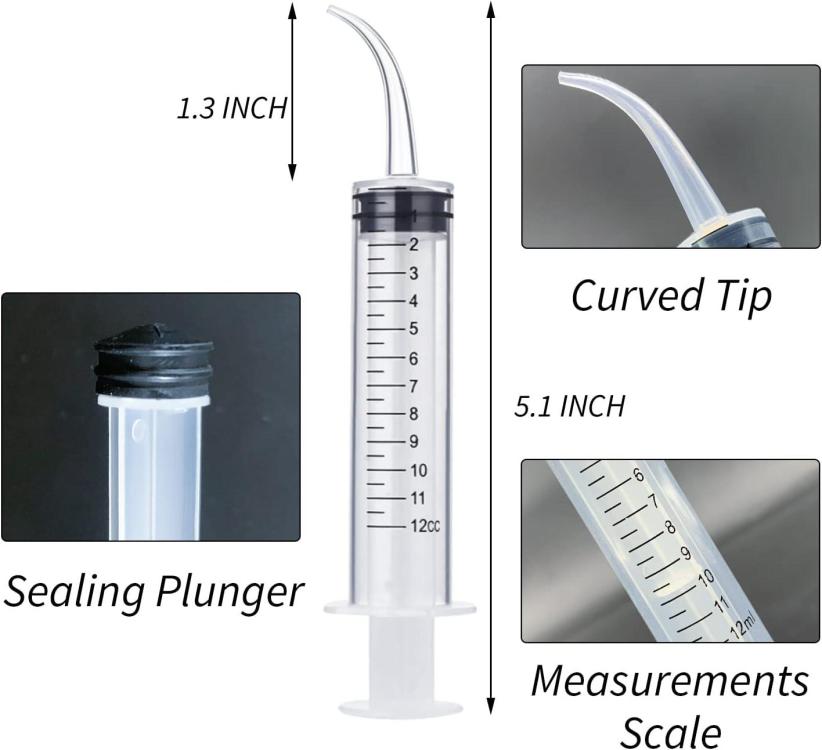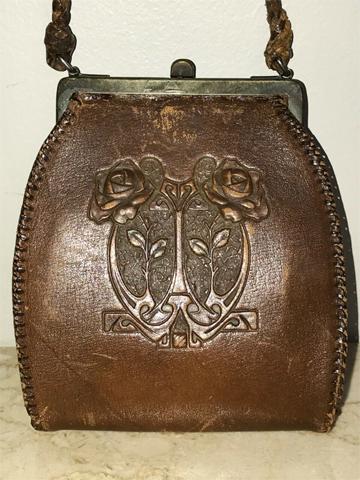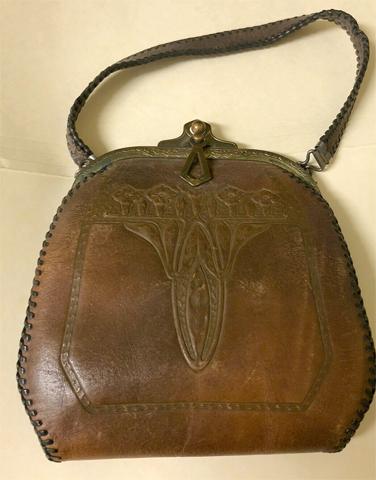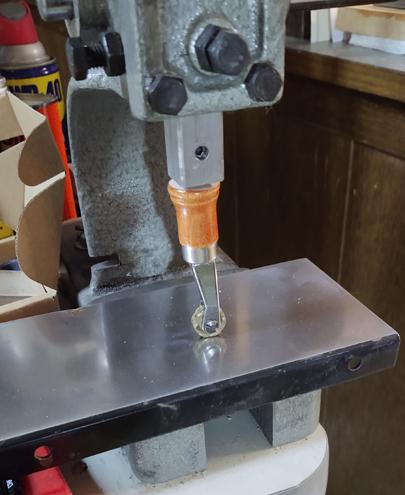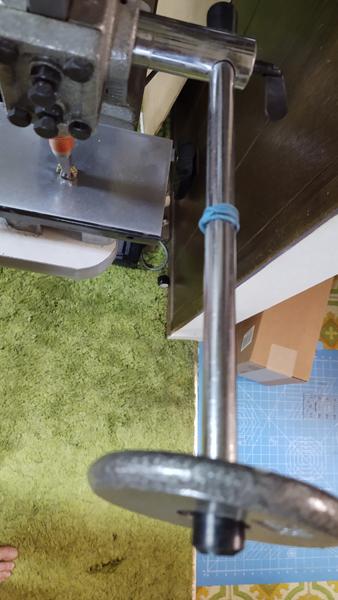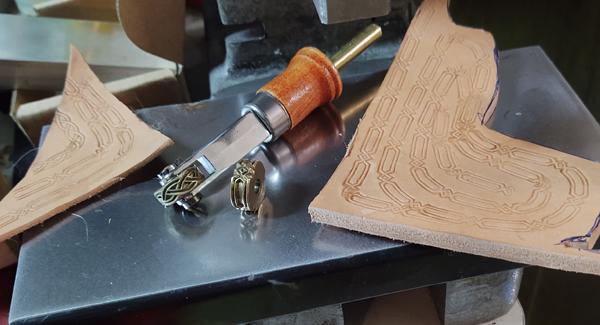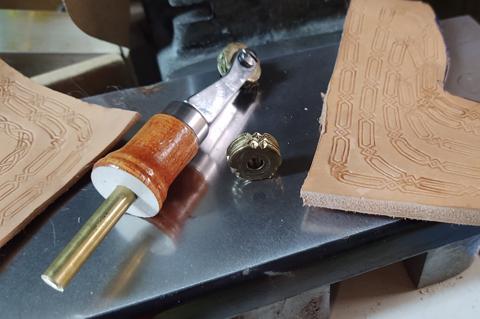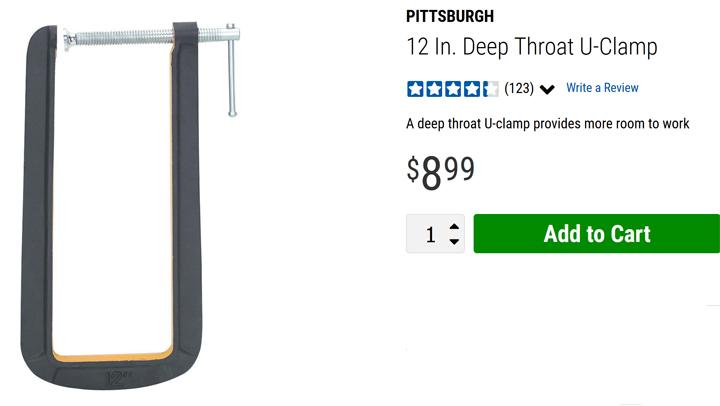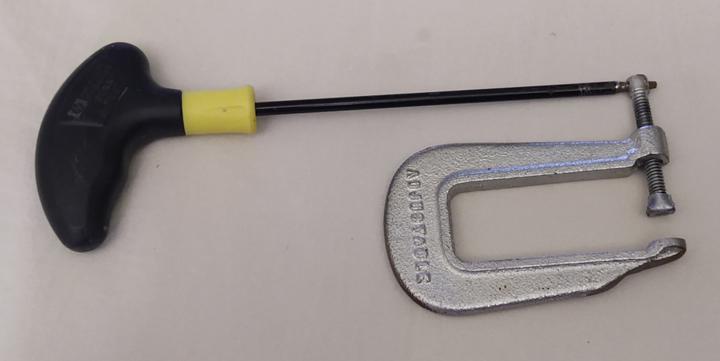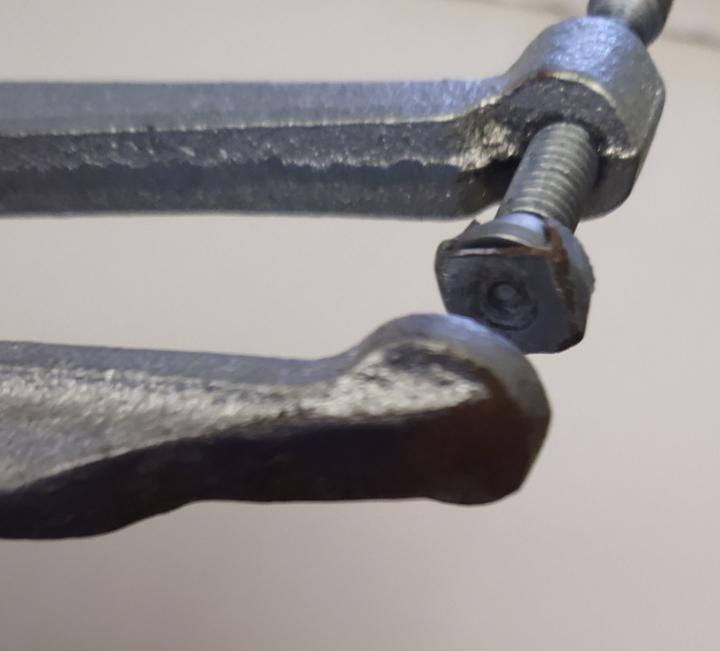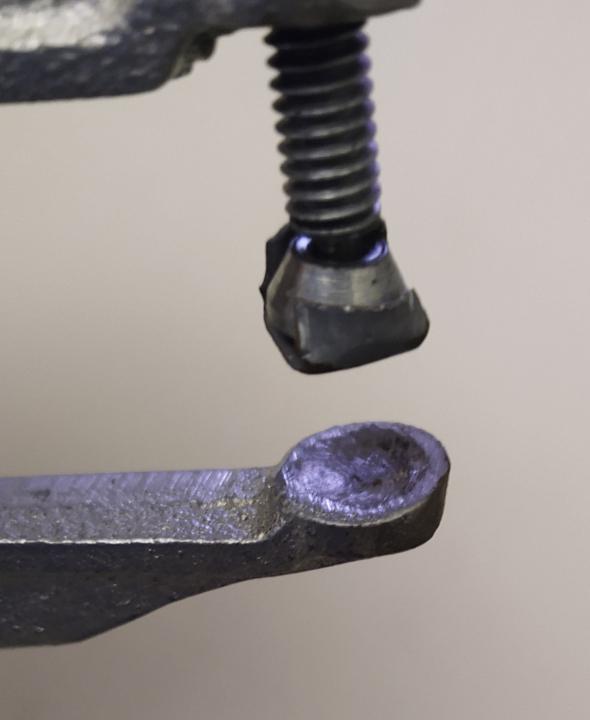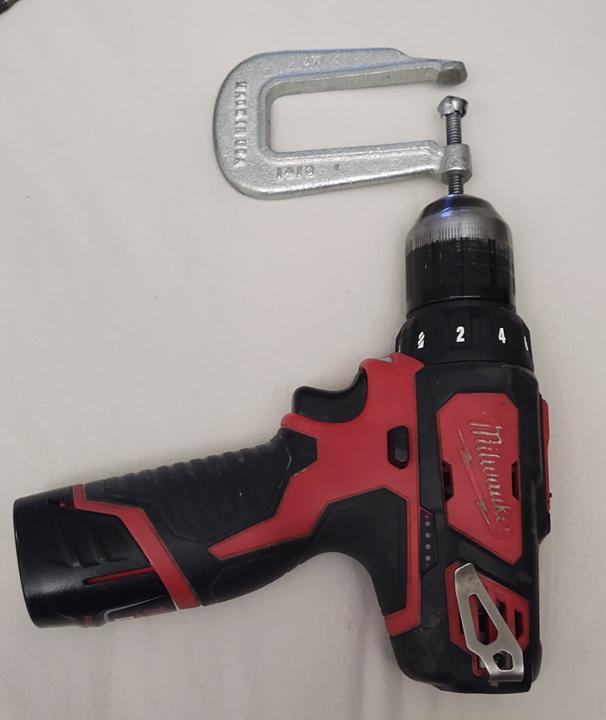
Lil Doodler
Members-
Posts
66 -
Joined
-
Last visited
Content Type
Profiles
Forums
Events
Blogs
Gallery
Everything posted by Lil Doodler
-
Precise application for Tokonole, glue, dye, grease, oil
Lil Doodler replied to Lil Doodler's topic in Leather Tools
Thanks for your question. To prevent the glue from setting up, leave a bead of glue hanging outside the tip, just like with a caulk gun. When you use the syringe the next time, wipe/pull the bead on the end of the tip off. After that, I push a little out to clean the passage before applying whatever the substance is onto the project. When the syringe gets low, clean the tip off (if necessary) and suck up some more of whatever to refill. If somehow the substance inside hardens, just throw the syringe away. The syringes are inexpensive - cost less than a buck. So far, I haven't had to throw any away. -
Precise application for Tokonole, glue, dye, grease, oil
Lil Doodler posted a topic in Leather Tools
Howdy! I'm wondering if anyone else uses Dental/Vet syringes? I did a search for syringes in the forums, and saw only medical metal needle type syringes. These are intended for Dental use or vet use, but I've found they're perfect for many other applications where a small or precise amount is best. I first used them on the inside borders of leather before sewing. Holds the leather in place so it doesn't shift around. Just a small bead is all that's needed. I don't use powerful leather glue in this situation because it's just to hold the leather pieces together while it's being sewn. It's easy to use Elmers or Tokonole in the syringe on leather edging. Where there's a valley or gap between different layers of leather, precisely fill it and let it dry before applying another layer or top layer. You can easily trim the tip to get a larger bead for wider/thicker edges. After finishing using the syringe, leave a small bead outside the tip to dry up and seal it until the next use (just like a caulk gun). The syringes can be also used for leather paint, dyes or oils. With thicker fluids, it's harder to pull in and push out but it will work. I also use these for lubricating machinery, guns and even doors with oils and grease. It's really efficient at putting oil on the inside rails of slides and bcg. These are fairly inexpensive. On Amazon, I got a 10 pack for under $10 including tax. Although these are disposable, I have yet to throw one away. https://www.amazon.com/gp/product/B0C9HF3SRQ/ref=ppx_yo_dt_b_search_asin_title?ie=UTF8&th=1 -
Thanks for the feedback! The cow horn I have was "sanded" No hair inside or out. No stink lol The cow horn seemed to work better than a bone folder that is glossy/glass smooth After hearing from y'all, I'm tempted to buy and try a rougher surface (unsanded) elk or deer horn
-
Good thing about ripstop nylon, Sunbrella and some similar synthetics is that you can use a hot knife tool or even a soldering pencil (depending on the thickness) (besides using a laser to cut) and have a no fray edge. I found a 3/8" thick x 12" x 24" tempered glass to put under the ripstop nylon or Sunbrella when cutting with a Sailrite hot knife. I found you can use almost any metal foil to block/protect rfid cards. I use thin copper foil on a roll bought from a hobby store.
-
I was wondering if anybody here uses cow horns for smoothing out/burnishing leather edges? They seem to work well for burnishing for me. I use the wide part of the horn for longer areas. Smooths out the edge without too much effort. The pointy end is very convenient for inside curves, even tight ones. Is there a downside to using one of these? Thanks
-
Great job putting that together! A while ago, when Hobby Lobby still had 40% off coupons, I bought a Logan 450-1 mat cutter for straight cutting leather. I found that sometimes the veg-tan would slip when making long cuts. To fix that, I put some anti-slip tape under the straight edge. The tape was too wide, so I had to trim it to fit. Works good now. If you have slippage problems, here's what I used: https://www.amazon.com/gp/product/B07MKG5BRF/ref=ppx_yo_dt_b_search_asin_title?ie=UTF8&psc=1
- 11 replies
-
Howdy! I saw someplace on the web that some people use Elmer's white glue to cover up gaps on the edges where layer(s) of leather meet, to make a very smooth edge. Some mix the Elmer's with acrylic paint or Edge-Kote before applying. Some hit the smoothed edge with acrylic paint or Edge-Kote after. I think if that works, it will make finishing edges faster and easier. I did a search of the forum, but didn't see anything, so I thought I'd ask to see if anyone is using this and had good results/long term good results. But the search results were more about gluing leather together with Elmer's, not as an edge treatment. If you've tried this, please let me know what results you had.
-
Thanks! Great input/ideas
-
Howdy! I'm curious . . . Does anyone use a tension gauge to measure tension from the needle or bobbin? I think it might be handy, especially when switching to different material thickness involving changing needle sizes and thread weights. I've seen some bobbin thread tension testing devices from TOWA that handle bigger bobbins, but nothing for a bobbin for a Juki 441 clone. I guess in the end, no matter what, you'd have to fine tune according to how you see the stitches in the material you are using.
-
Great jig for sharpening the round knife! If I may suggest, there's always different ways to sharpen round knifes. I saw on a holster making video by Bianchi that he uses a grinder with a polishing\buffing wheel with white polishing compound (not the polishing compound that Tandy sells). When he works on a full rig holster project, he has a couple of sharpened round knifes handy, so when one begins to go dull, he picks up another one. He says that you can tell when a round knife is getting dull when you can hear it cutting the leather. It's true
- 10 replies
-
It looks like things might have changed from when I bought my Premier Ranch Tuff Sheds. At the time . . . . What I did with my 12 x 16 Tuff Shed was to order it with a roof ridge ventilation option. So hot air will easily escape out the top of the shed. I also added an inlet vent, low, close to the floor between the studs. That allowed cooler air in so that when the hot air exits out the top, there will be cooler air drawn in. Rather than buy theirs, I bought my own, something like this https://www.amazon.com/Duraflo-621218REC-Recessed-12-Inch-18-Inch/dp/B00HF5UCWE/ref=sr_1_19?dchild=1&keywords=Duraflo&qid=1601505200&sr=8-19 Another option I took was to get the better roof material with lifetime warranty with light color shingles to reflect the sun's heat. I live in Austin Texas, and it can get really really hot here during the summer and fall. But inside my Tuff Shed, it's actually a tad cooler inside than outside in hot weather.
-
If I may suggest an answer to a closely related question . . . After deciding which ones to make holsters for, what gun are you going to use to make the holster? To make a holster, you need a gun to figure dimensions, to use to mold the leather to the gun. It could be your gun, or a friend's gun. If it's a holster for a customer's gun, they probably won't want to part with it. You could buy one of each gun you wish to make holsters for, but it would be costly. Some people use a "dummy" or replica of real firearms. They're less expensive than the real thing, don't have to worry about damage to the dummy when handling it or using it to mold the leather. One source of cast aluminum replicas is Duncan's Customs in Michigan. https://duncansoutdoor.com/duncans-customs/ Good Luck to you
-
Press Plate Embossing Plate Maker?
Lil Doodler replied to whitakermk's topic in Leatherwork Conversation
Thanks for the information! Much appreciated -
Press Plate Embossing Plate Maker?
Lil Doodler replied to whitakermk's topic in Leatherwork Conversation
Hi, May I ask? Could these embossing plates work on chrome tan leather as well? I'm interested in art nouveau. There was a lot of leather items made commercially a century ago using that style of design. I've been wondering if they did (they must have?) use embossing plates. Most of the items were fairly small - under 8" x 8", and all seemed to use chrome tan leather. To give you an idea of the type of finished product, Here's a couple examples of purses If they didn't use an embossing plate, how do you think these were made. They don't look carved. Thanks in advance for your help -
Thanks chrisash dikman - Thanks! I didn't happen to think of those ideas The weight I'm using (1 1/4 lbs) is from a set of dumbells and has a 1" hole in the center. Putting the weight on the very end of the lever, where there's a plastic cap on my 1/2 ton arbor press is not very stable, in fact it's a precarious position and can/did fall off. Luckily not on my toes hehehe. Resting this weight against the rubber band wrapped around the lever does make it a bit safer for me. I did think if I didn't have this weight, that I could use a string tied to a can of soup or veggies on one end and a loop on the other end of the string to go around the lever. Using the lever locking screw to adjust the length and downward pressure at the ram is a great idea! Using a weight on top of the ram would work, but you would lose 2 things I think. a) the mechanical advantage of the gearing and the lever is something like 18:1 (or is it 1:18? or maybe 1:12? Does that depend on the length of the lever? Some arbor presses have different gearing ratios). For each pound of pressure on the lever, there's somewhere between 12 to 18 lbs downward pressure on the ram I think. I'm pretty ignorant about the mechanical engineering of arbor presses. b) Because you aren't using the lever, it would be harder to make easy adjustments to the downward pressure. You would have to experiment with how much weight would be needed. You'd keep adding weights on top of the ram until you get the best results. Depending on your arbor press, if there is room under the ram, maybe you could use a scale under the ram, measure the pressure needed using the lever, then use that amount of weight on top of the ram. The ram on my 1/2 ton arbor press is pretty small - 3/4". So putting weights on top of the ram would be impractical for me.
-
Hi, Thought I'd share another use for the arbor press. I had bought a set of Tandy embossing wheels to use with the Tandy Spacer tool (SKU 8091-00 ), but I found it very difficult to emboss as deep as I had hoped for. I wanted to use the very small embossing wheel as part of a border around the edges of a project. Even if I pushed on the spacer tool hard, I wasn't able to make a deep enough impression and it was hard to keep the embossing line straight. So I modified the Tandy spacer tool. I cut most of the handle off, drilled a 1" deep 1/4" hole and inserted a 1/4" brass rod. From there, I was able to put it into the smaller hole in the ram on the arbor press I dampened the leather and was able to pull the leather under the embossing wheel. However, it was difficult because I had to put a little pressure on the press lever and pull the leather through at the same time. It took very very little pressure on the lever. Next I took a 1 1/4 lb weight and put it on the end of the lever for the pressure on the embossing wheel. That way I would have both hands free to pull the leather. But even that was too much pressure. The embossing looked a little too heavy, and it was difficult to pull the leather through with that amount of weight on the end of the lever. So I put a rubber band around the lever, closer to the fulcrum so there would be less weight on the lever. The closer the weight is to the rotating shaft, the easier it gets to pull the leather through, but also a lighter impression is made. After a couple of adjustments, I was able to find a position for the weight were it made a decent impression and the leather wasn't too hard to pull under the wheel I've just starting fine tuning. I think once I get a fence/guide set up, it'll be easy to use these as a border. I found it is possible to make 90 degree turns, but not sharp turns. I think it's better to have the shaft for the spacer tool locked in place rather than able to spin freely. What do you think?
-
Right, right . . . I'd be lucky if that's all that happened. For me, it'd be - Boing! - Ouch! - Where did the bloody thing go? Probably disappear down the same deep mysterious rabbit hole and never to be seen again like churchkey/bottle openers hehehe
-
from the web . . . Inserting or removing bearings, seals, studs, and bushings – probably the most common use Installing dowels, alignments pins, threaded (key) inserts, t-nuts, and roll pins, Bending, joggling, and forming small sheet metal parts in combination with custom made dies Die cutting ***Embossing or punching holes in leather, cloth, plastic, gaskets, and thin sheet metal – this is a cool and underutilized use Broaching (keyways and other misc.) Flattening or straightening out small bumps in metal Pressing inlays Pressing guitar frets – this is another cool one Light riveting Inserting and removing gears and pulleys Compressing springs – careful here Tie rod ends and Ball joints Crimping cables and wires into a die u-joints Some use a pointed die in the arbor press to destroy hard drives Blacksmith work in forging cracking nuts has been noted lol In the jewelry industry, the arbor press is also commonly used as a cutting, punching, and pattern embossing tool. The force an arbor press provides has the ability to punch through some metals without damaging the surface, unlike other pressing options. In the automobile industry, the arbor press also features as a mandril press. Here, the arbor press is used for press-fitting bearings and embossing metal objects that fit in its throat. The arbor press is also used in woodworking for creating patterns and metalwork that enhance the functions or aesthetics of a woodworker’s piece. And I found this in a different thread on using an arbor for leather work On 1/15/2018 at 2:13 PM, Double Daddy said: I used a bench top drill press for a long time for lots of pressing and setting functions...as well as spinning my sanding drums and my cocobolo burnisher. It worked well right up until all of the pressing/setting stress finally weakened the knuckle arm where the table connected to the vertical post and it cracked and failed...now I just use the press as a sander and burnisher (no sense in tossing it when the motor still works great). I have a 1-ton arbor press and a keyless chuck adapter with powerful magnet built into it...it just grabs right onto the ram and I can use the short/cheap line20/24 snap setters or take it off and use the ram face to press my brass maker's mark. Here's the link to the keyless chuck that I have: https://www.ebay.com/itm/Arbor-Press-Magnetic-Pin-Press-1-2-Chuck-Tool-APMT0-5/252843022376?hash=item3ade9e5828:g:PJoAAOSwc-tY4oNz ````````````````````````````````````````````````````````````````````````````````````````````` It looks like there's a lot of stress on the table that it wasn't intended to have But using the old drill press without a motor that wouldn't matter I guess
-
I've been thinking . . . As Spyros pointed out, a real advantage of the drill press is the throat and table size. Using a basket weave stamp on the arbor press with a guide/fence I was able to quickly put down an accurate, almost flawless pattern on a leather project. However, because my arbor press is small and the work area is small between the ram (where the tool was being held) and the supporting arm, I was limited in how large an area I could work. If I had a floor drill press with a large table that had a material guide and a "pinned"/stationary chuck that couldn't rotate, putting basket weave on a larger project would be quick and easy. Set up a stool, so the table is a foot or so below eye level, add good lighting and work the handle! I'd case the leather so the drill press doesn't have to apply much pressure.
-
Spyros, Yep, you are right, it should work fine and I did say . . .. Personally, I've never seen any drill press with a bad motor, much less a big floor drill press model with a bad motor. I was thinking more about the much smaller bench drill presses that are much lighter duty and much less expensive. Heck yeah, if I had an old floor model drill press with a bad motor, I wouldn't hesitate to use it as much as I could as an arbor for leather work
-
Here is a much longer / deeper clamp, over 300mm / 12 ". You would be hard pressed (pun intended) to find a drill press that would give you that kind of clearance It's very cheap compared to the price of a drill press or an arbor press.
-
Close up of lower Close up of upper You could use a drill on the torque setting to close it quickly This is how I use it, with a longer lever. I did also modify the back of the lower end to get into a small place. I wouldn't be too afraid to trim more off of the bottom if I needed to. It doesn't take that much pressure to set most rivets or eyelets.
-
Spyros, That sounds like a good idea if it works. For an eyelet or rivet it might work very well. But have you seen the teeth on a drill press quill, or the spines on the shaft that rotates to pull the quill down? For the inexpensive drill presses anyway, they are quite shallow and light duty compared to an arbor press. If they should break under stress, it might be very difficult to find cheap replacement parts Might I suggest another way, without a hammer or a press, much cheaper to set / press eyelets or rivets? This is off subject a bit for this thread . . . I have used a deep throat "C" or "U" clamp very successfully. Use the inclined plane of the screw to tighten/close exactly the eyelet or rivet where you want. Of course it's not as fast as using a hammer Of course you would have to adapt the closing ends of the clamp for what you wanted to squeeze together. Here is a picture of a modified deep throat C clamp I use for rivets




